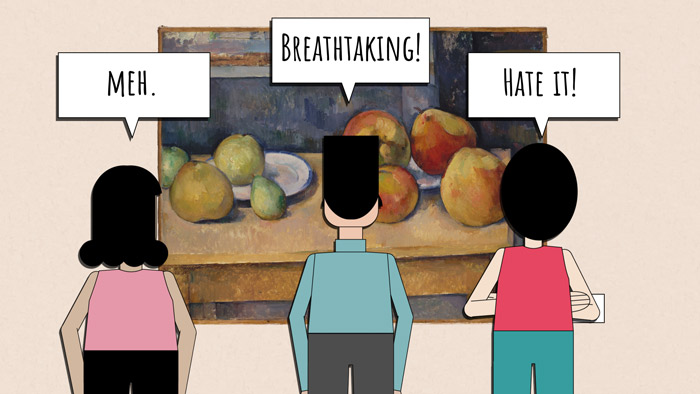WHAT IS ART ?
Art is something we do, a verb. Art is an expression of our thoughts, emotions, intuitions, and desires, but it is even more personal than that: it’s about sharing the way we experience the world, which for many is an extension of personality. It is the communication of intimate concepts that cannot be faithfully portrayed by words alone. And because words alone are not enough, we must find some other vehicle to carry our intent. But the content that we instill on or in our chosen media is not in itself the art. Art is to be found in how the media is used, the way in which the content is expressed.
Art’ is where we make meaning beyond language. Because what art expresses and evokes is in part ineffable, we find it difficult to define and delineate it. It is known through the experience of the audience as well as the intention and expression of the artist. The meaning is made by all the participants, and so can never be fully known. It is multifarious and on-going. Even a disagreement is a tension which is itself an expression of something.
IMPACT OF ART ?
Art has a unique power to change the way you see the world. It can help you to explore new ideas and perspectives, and it can make you feel more connected to others. The arts have been used for many centuries as a tool for social change.
In ancient Greece, art was used as a means of communication. The Greeks believed that the gods could only be reached through art and music, which was why they placed great importance on these two forms of expression.
In modern times, artists have used their work to reflect society's struggles and political unrest in protest art movements such as Dadaism, Surrealism, Pop Art, and more recently, Postmodernism.
The impact of arts on an individual is not only pleasure but also improvement of ability and skills, and enhancement of physical and psychological well-being. Many art activities provide enjoyment and participation, such as museums, festivals, murals, and performances. Through art experiences, an individual can have fun, feel free, and take a rest from a daily routine. Moreover, individuals can benefit from the arts because they can practice self-expression, learn new skills, and even promote health and welfare, self-confidence, self-identity, and self-esteem.
Art activities could be divided into two categories: producing arts and consuming arts. Some examples of producing arts are playing a musical instrument, singing, drawing or painting, dancing, and acting. On the other hand, art consumption includes expenditures on entertainment and media like attending live performances, watching movies, purchasing music albums and/or online music, and buying paintings and crafts. These activities result in people’s satisfaction and produce a positive effect on their quality of life.




GREATLY DESCRIBED AS ART IS A FORM OF VERB RIGHTLY SAID!!!
ReplyDelete